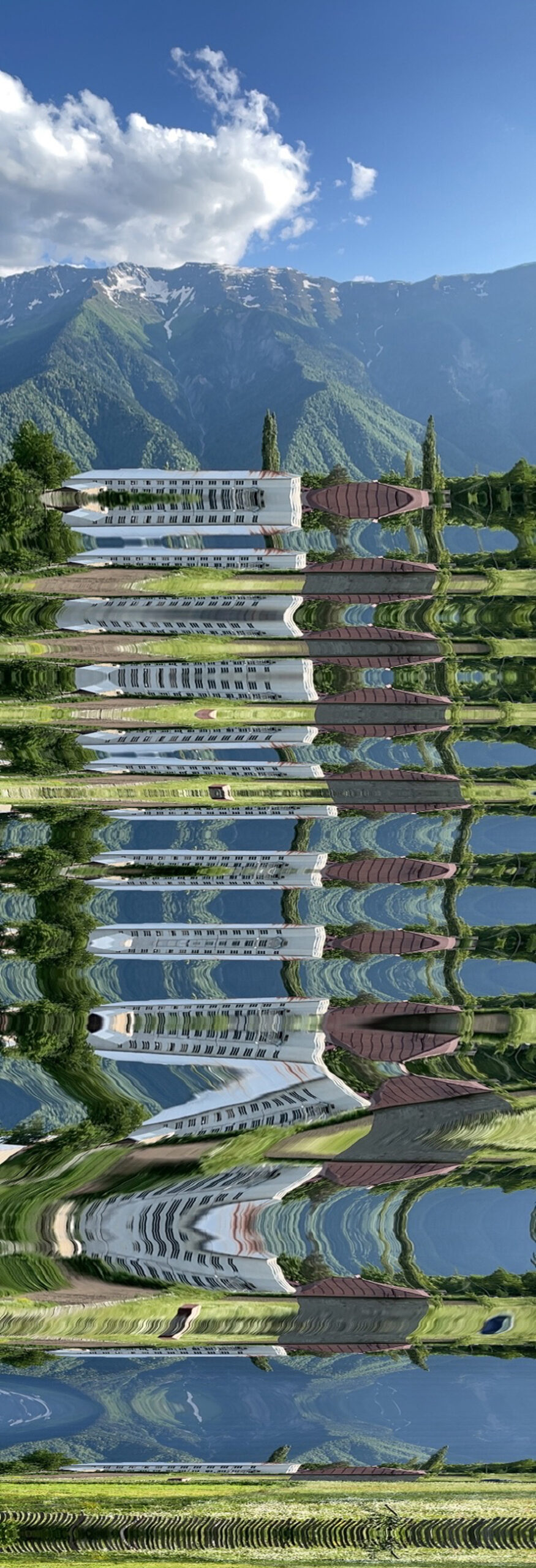I’ve been experimenting a bit with my iPhone of late, using some of its video capabilities to see what it can do. It strikes me that, with a phone or a digital camera of another kind, there are actually many possibilities for altering an image or video. For example:
I’m now shooting timelapse videos. These involve fixing the device in place (any way you can: I’m using a tripod and elastic bands). It helps to have it attached to a power source as well, as the battery can be drained rather more quickly than usual. Then you set it to take an image every X unit of time, which can be anything from a fraction of a second to whatever the software allows. My setting is about 1 frame per second; standard shooting is 28-60 fps. Then note the starting time, and leave it to do its thing. If you have clouds in the shot, their motion will be sped up to something wonderfully fast yet still smooth. My iPhone’s timelapse setting seems to allow only 1 frame rate and a maximum video length of 24 seconds, so it’s worth looking online for something with more flexibility.
Or you can go with slow motion video, which is the opposite: more frames per second instead of less, typically 120 fps and up. This will reveal details of fast motion in wonderful clarity, and need not be tripod-mounted or otherwise fixed.

(If you’re all in with the video methods, buying a device which lets your camera move slowly through an arc while also shooting will let you change the scene as the shooting is happening).
Most digital SLRs or other digital cameras will let you shoot video as well as stills nowadays, for highest quality. So you’re not limited to just your phone’s video camera anymore.

For still shots, try a very slow shutter speed on a fixed camera, choosing lowest ISO and smallest aperture size. This will also blur clouds or motion to something beautifully, ethereally smooth. I recently bought some neutral density filters for my digital SLR camera lenses, to further extend how long a shot I can make by further reducing the light getting to the camera’s sensor. I’m looking for something longer than a second in daylight. This will also nicely blur the motion of water to curved lines, and turn stars into star trails at night.

There’s a freaky photographic process I have really wanted to try once I found out how to automate it: slitscan. For this, you select a single line, horizontal or vertical, from each digital image of a long sequence (which is typically a set of frames from a video). Line 1 from frame 1, line 2 from frame 2, and so on. These are all joined into either a video image or a still one, showing scenes which until now have existed only in the imagination. Searching for “slitscan” on YouTube will show how bizarre the effects can get. All the photos with this article are from several freeware slitscan programs I found for my iPhone. Surreal, to match the times we live in at the moment.

Shooting macro (extreme closeup) and want to get the whole subject in focus from back to front? That’s called focus stacking. Here you’re shooting a fixed object with a fixed camera, changing the focus a little each time, then asking your software to combine the set of shots but use only the in-focus part of each one. Firmly into what’s called computational photography here, but this is where we are.
HDR stands for high dynamic range. When your subject is fixed but of very high contrast between highlights and shadows, you shoot a set of images from over-exposed to under-exposed (usually at least three shots, up to as many as are necessary to get detail in all the tones). Then, again, combine them, this time your software joining those exposures together to get an image with detail everywhere. This is easy to overdo, but when subtle can be wonderful if it’s not too obvious.

Shoot in grayscale instead of color, to emphasize tones and composition with no distraction from hues. Or, on the contrary, over-saturate the colors. Shoot or process in only black and white, no grays at all even: the opposite of HDR, called a 1-bit image. Change your angle of view, from right down on the ground to child’s eye-height to as high up as you can get, e.g. from a tall building. Shoot only reflections, in glass, metal, water or mirrors. Find out what controls you can use in manual mode, and play with them.
Limits? Where? Only where you place them. The estimate for “world population of photos for 2025” is due to hit two trillion for the first time in history. Take part!
Blog by Tony Hanmer
Tony Hanmer has lived in Georgia since 1999, in Svaneti since 2007, and been a weekly writer and photographer for GT since early 2011. He runs the “Svaneti Renaissance” Facebook group, now with over 2000 members, at www.facebook.com/groups/SvanetiRenaissance/
He and his wife also run their own guest house in Etseri: www.facebook.com/hanmer.house.svaneti














